Long before the iconic Hurricane leapt into the air at Brooklands in the hands of George Bulman in November 1935, the foundations of an iconic fighter had already been laid.
Before delving into the fascinating history of these elegant machines, I first wanted to introduce the story of the famous man behind this and countless other iconic Hawker designs, Sir Sydney Camm.
Camm was born in 1893, ten years before the Wright Brothers inaugural hop along the sand at Kittyhawk, but by the time he had finished schooling he had developed a keen interest in aircraft and specifically aeronautics. Like many young boys over the 100+ years of flight, he spent his time building model aircraft, eventually building a full size glider. After passing through a number of roles in smaller aircraft manufacturers, Camm found himself at Hawker Aircraft Company in 1923.
Hawker as an aircraft manufacturer had only been in existence since 1920, though in practice, it was a continuation of the wartime giant Sopwith in all but name, named after Harry Hawker, Sopwith’s chief test pilot. It was a less iconic machine that first rolled out having been designed by Camm, the diminutive Cygnet, built for the Lypmne air trials. The Cygnet proved a popular aeroplane and it got Camm the job of chief designer by 1925.
The Hart
In 1926 the Air Ministry issued a new specification, 12/26, with the aim of securing a new, high performance, two seat bomber. The new aircraft would have to be capable of reaching at least 160mph and be powered by the new Rolls-Royce F.IXB engine, which would later become known as the Kestrel. Much more detail on the development of this engine can be found in my Aero Engines series here. In short though, Rolls-Royce designed this liquid cooled inline engine in direct response to the rise in popularity of the Curtiss D-12 which was providing impressive performance in aircraft around the globe.
Up until this point Hawker aircraft design had still really followed the Sopwith premise of a round, air cooled engine up front. This saw designs such as the Tomtit come into production. While an air-cooled engine made for simpler maintenance it also provided more drag. With the requirement to use the new Rolls Royce Motor, Camm could take advantage of the aerodynamic cross-section, leading to a minimum frontal area. The Hart was Camm’s first foray into construction using a tubular steel frame, something that would be common-place for the company by the time the Hurricane was rolled out. As the design process went on an incredibly sleek looking machine started to emerge, a slender fuselage, aided by the Rolls Royce engine, paired with two unmistakably Hawker wings (the top slightly swept) marked the start of one of Aviation’s most beautiful design families.
By June 1928 the first Hart prototype, J9502, took to the skies for the first time. Once early flight testing had been completed the Hart followed the familiar process of military trials at Martlesham Heath in September. Ultimately the Air Ministry liked what they see and soon a new specification 9/29 was issued ordering the production of 15 Harts for military service. Among these aircraft were 12 aircraft that would soon equip 33 squadron by the start of 1930.
It was no surprise that the Air Force were interested in the new bomber, with the Kestrel engine propelling the aircraft to a top speed of 186mph, faster than the majority of the fighters in service at the time. By 1936 a large number of squadrons were fully equipped with Harts, over 900 aircraft were eventually built during the Harts production. As well as seeing extensive service with the RAF in the Abyssinia Crisis in 1935, Swedish Harts also saw action during their winter was of 1939/40 as dive bombers (a role to which Hawkers objected!).
As the Hart developed it became a popular aeroplane and went through various different guises, notably in a tandem trainer configuration as well as a radial powered version developed for the Swedish Air Force. There was also the Army Co-operation variant given the name of Audax.
Demon
It was mentioned earlier that this impressive new bomber from Hawkers was actually noticeably faster and therefore able to outrun most of the fighters of the day! Much like the familiar story of the de Havilland Mosquito it was decided that the best course of action would be to develop a fighter version of the Hart. Originally, rather unimaginatively known as the Hart Fighter, the modified design would go on to be known as the Hawker Demon.
he Demon benefited from two forward facing machine guns and one rear facing, along with a modified rear cockpit, providing the rear gunner with a greater field of movement when firing. In order to make the best of the design a supercharged variant of the Kestrel was installed. While a number of “Hart Fighters” had been pressed into service as early as 1931, the first true flight of the Demon would not come until 1933.
305 examples of the biplane were built, with a large number of these airframes finding service with the Royal Australian Air Force. In RAF service Demons were used during the Abyssinian crisis and were not relieved of front-line duty until the Bristol Blenheim took over in 1938.

Fury
Alongside the development of the new bomber, Hawkers were also hard at work designing an aircraft to meet the new government specification for a single engined biplane fighter. This culminated in the first flight of an airframe known as the Hornet, which first flew in 1929, powered by a Kestrel engine, just like its big brother, the Hart. The Air ministry expressed an interest in the aircraft and ordered 21 examples. The government changed the name of the design to the more familiar Fury and an icon of 1930s RAF flying was born.
The first true flight of the Fury took place on the 25th March 1931 and proved a powerful machine. It was the first production aircraft for the RAF that could exceed 200mph in level flight and could perform graceful aerobatics with ease. The Fury had already entered service by the summer of 1931, first equipping 43 Squadron. Mk 1 Fury’s were only ordered in small numbers while a reasonable number of Mk IIs meant that six squadrons were equipped with the type by 1937.

A few Furys were exported to spain in 1936 and were flown in combat by the Spanish Republican Air Force during the civil war, ultimately two of these aircraft were lost in combat.

While the RAF had long phased out the Fury in favour of the Gloster Gladiator and Hawker Hurricane, eastern European countries such as Yugoslavia were still very much having to go into battle against the Luftwaffe’s ME110 and 109 aircraft with the 1930s biplane design. I don’t think much elaboration is required to explain how those air battles went. I can only ay the men who went to war in aircraft from a past era were very brave indeed.
The South African Air Force had more success with WW2 Fury service, with their airframes racking up a few kills in 1941 against the Italian Air Force, both in the air and in a ground attack role.

Arguably the role the Fury will be most famous for is those iconic aerobatic displays of the 1930s, when the RAF had a reputation for being the Greatest Flying Club in the world. Furys would take to the air tied together in Vic formation and perform graceful close formation aerobatics while tied together, showing the incredible power that the RAF then had at its disposal.
Of all the Hawker Biplanes, the Fury may just be the most graceful looking machine and one of the most beautiful aircraft of the 1930s.
Nimrod
The Nimrod started life as a “beefed up” Fury designed to take the strains of naval operations. This design saw Camm break convention for carrier aircraft having radial engines following his success with the Kestrel in the other Fury and Hart.
On immediate inspection, tail hook aside there are no huge differences between the Nimrod and Fury, though the undercarriage is notably stockier and less stalk-like than its land based cousin. The Nimrod first took to the skies in 1931 and was soon pressed into service with 408 Flight based on HMS Glorious in 1932. While a similar design to the Fury, the Naval modifications took their toll and significantly reduced the airframes top speed.
The Nimrod II was completed in 1934 and was a decidedly different machine to the Mk I with the main noticeable difference being the swept wings
Hind
The Hart had served the RAF well since its introduction but the world of aviation always moves at an alarming pace and the age of the monoplane was fast approaching by 1934. Aircraft such as the Fairey Battle were on the horizon as the next great hope for the RAF but were not yet ready. The Air Ministry was therefore in the market for a stop gap, it was decided that an improved Hawker Hart would be the way forward.

The new airframe, which would become the Hind, featured the structural changes of the Demon combined with the new Rolls-Royce Kestrel V. The first Hind prototype flew in September 1934.

The Hind saw the longest service life of any of the Hawker biplanes, entering service with the RAF in 1935 and not being retired from active duties until the Afghan Air Force retired the type in 1957! When first introduced the Hind could be found on strength of 20 frontline squadrons and was quickly overtaken by the Fairey Battle and Bristol Blenheim by 1937. A short spell in the Army co-operation role would eventually be brought to an end by the purpose built Hawker Hector (another Hart derivative).

Much like the Fury the Hind saw plenty of active service with the Yugoslavian Air Force and South African Air Force. With its front line RAF duties being removed prior to WW2 the Hind provided valuable experience as an intermediate trainer during the war.
An Iconic Family
Over a decade after the glory days of Sopwith, Hawker still managed to design and build an incredible line of impressive fighting biplanes. Ultimately these classic designs saw very little active service while they were cutting edge technology with a number of engagements when they were very much obsolete. Nonetheless the sight of a silver winged Hawker biplane is almost a trademark of the interwar RAF and seeing these wonderful machines take to the skies today serve as a wonderful nostalgic reminder of those unique times of aviation development.
Having taken a look through the history of these designs, it seems sensible to follow this post up with an account of the surviving and airworthy examples, many of which are located in the UK. That post may not follow till the winter, but I’ll take any excuse to post more pictures of these graceful biplanes.


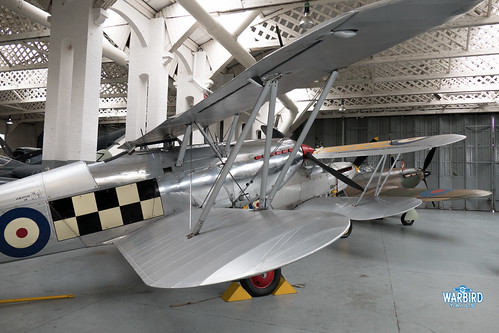
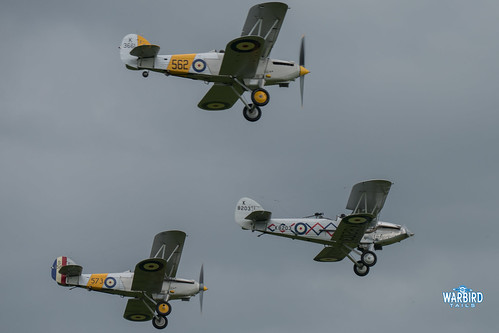

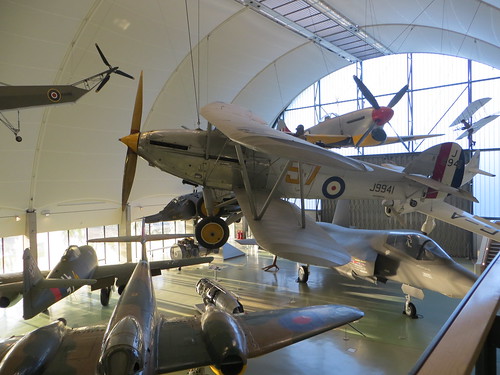
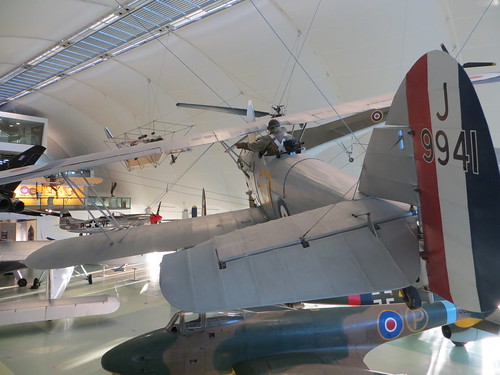


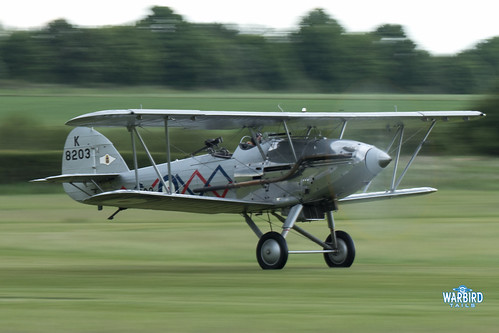
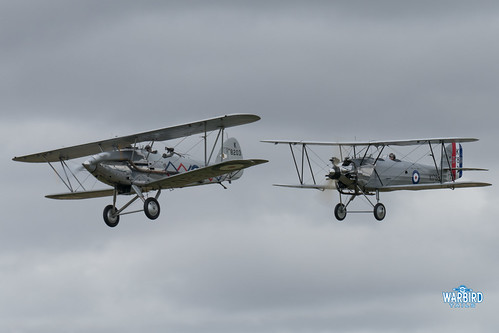
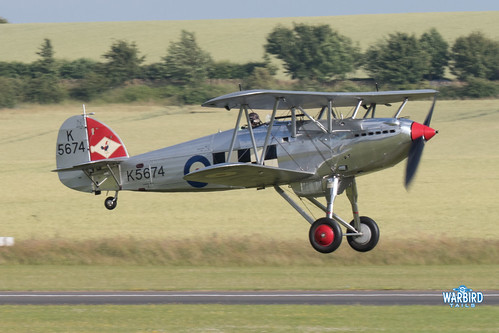

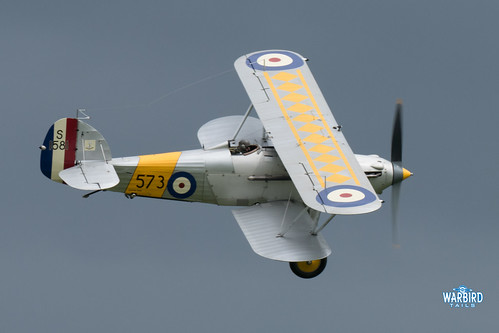

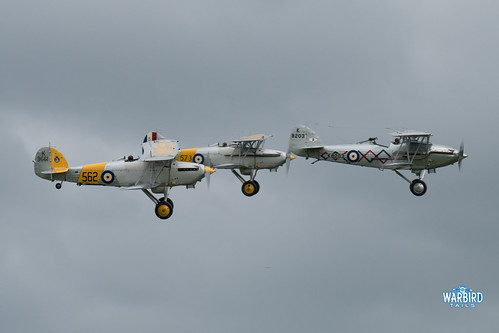
One thought on “1930s Silver Wings: The Hawker Biplane Family”